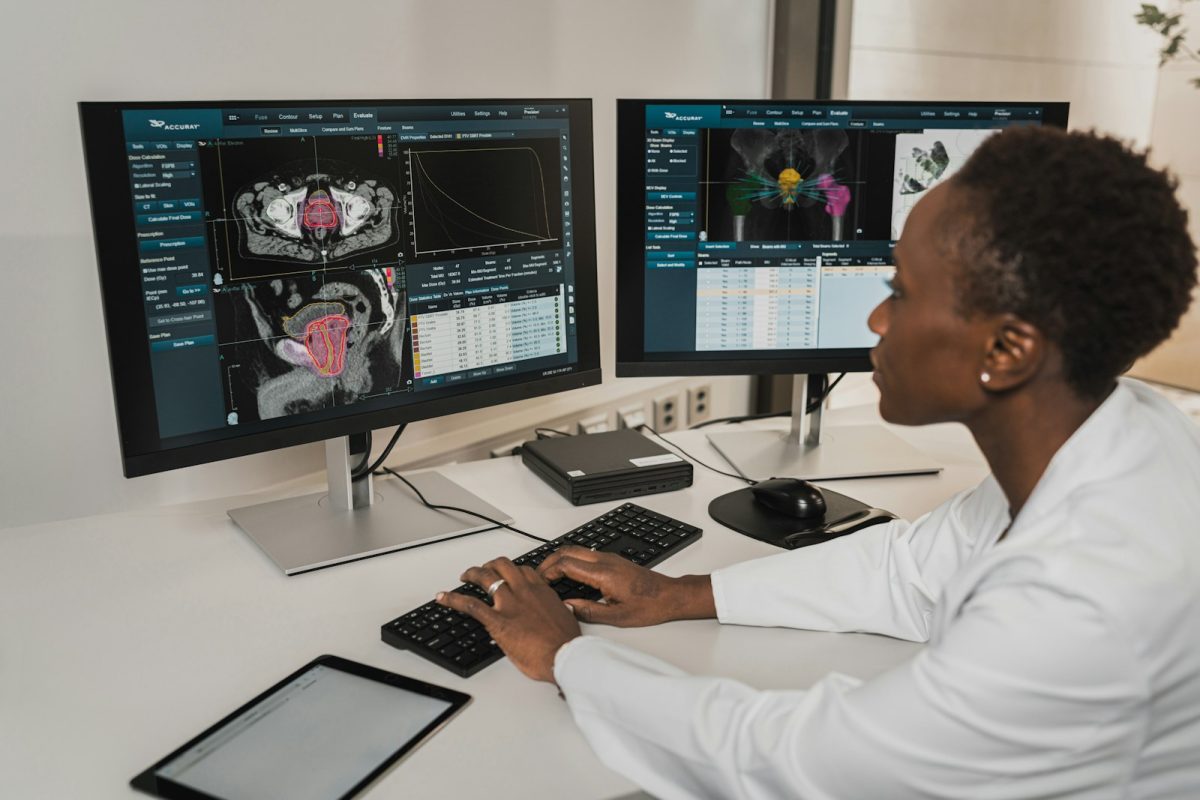Telesurgery is surgeons using computer and robotic systems to perform surgery on a patient. This means that the doctor isn’t in the same room as the patient. Telesurgery was formulated in the 1970s by NASA, originally to help astronauts while they were out of range, though it remained an idea. In 1985, the first robotic surgery was performed, mainly to protect the patient from the trembling hands of the surgeon. This invention later paved the way for new surgical advancements like the ROBODOC, a robot that was able to perform hip surgery without the need of human instruction.
Advantages: Telesurgery is helpful because of it’s numerous benefits. Patients in places that are hard for surgeons to get to like battlefields can simply get the surgical robots to the patients and operate from where they work. Surgical precision also plays a big part in what telesurgery is good for. Lots of times, surgeons have shaky hands that can potentially make mistakes during operations which could lead to an error in the healthcare of patients. Robots have precise movements that you can control. Lots of surgeons every year are getting sick due to the exposure of a patient’s open body. (This depends on the severity of the surgical procedure) Performing surgery from a distance can prevent this due to the distance of the patient from the doctor.
There is less pain from the patient during their recovery with the risk of blood infection lowered as well as the overall blood loss being a reduced amount. The incisions in the patient and the hospital stays are both smaller due to the speed and precision of the robots.
Disadvantages: Sometimes patients have doubts about their surgery so creating a bond with their surgeon puts their mind at ease while being operated on. With the distance between patient and surgeon, there is no trust in the surgeon from the patient. If there are any complications like the robot malfunctioning or having a wrong step in the surgical process, the surgeon will need to quickly finish the operation without the help of the robots so there are no further complications. (Scar tissue can make telesurgery exponentially more difficult.) Nerve damage by the robot is also a big risk that can permanently damage the brain signals to the rest of the patient’s muscles.
Overall, telesurgery has it’s advantages and disadvantages, though the advantages outweigh the disadvantages. If we continue to improve this method of precise surgery, we won’t have to worry about any mistakes in surgical procedures.
RELATED STORIES: https://www.ncbi.nlm.nih.gov/pmc/articles/PMC1422462/
https://www.news-medical.net/health/What-is-Remote-SurgeryTelesurgery.aspx
https://www.sciencedirect.com/topics/medicine-and-dentistry/telesurgery
https://www.ncbi.nlm.nih.gov/pmc/articles/PMC6067812/
TAKE ACTION: https://virginiatelementalhealth.org/



